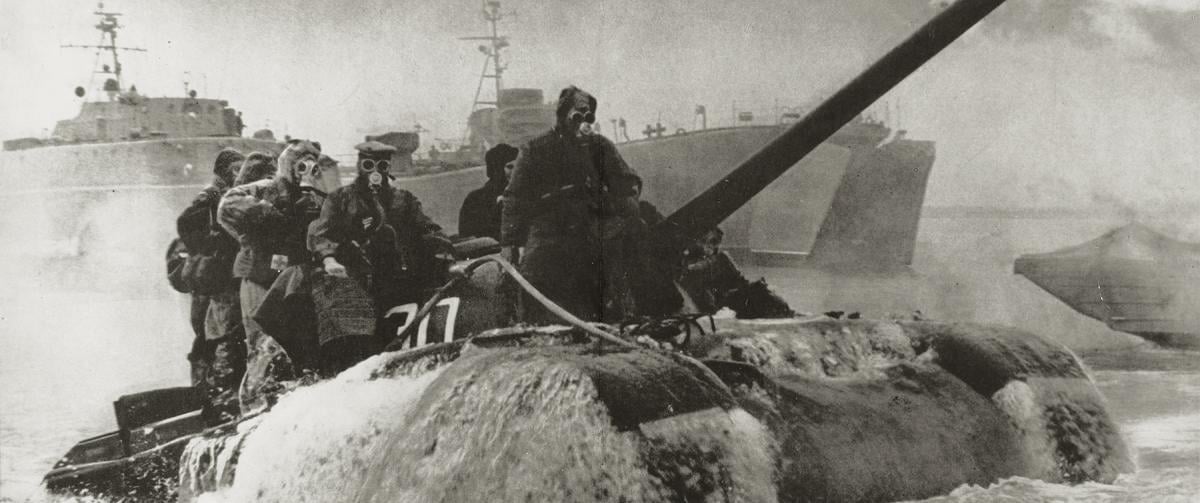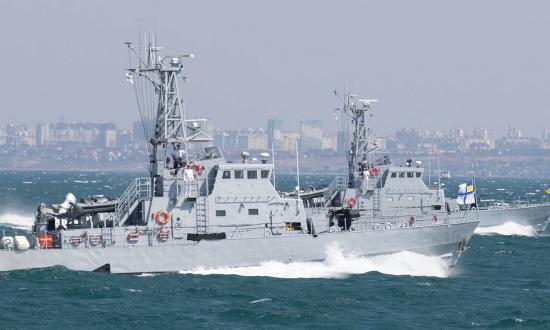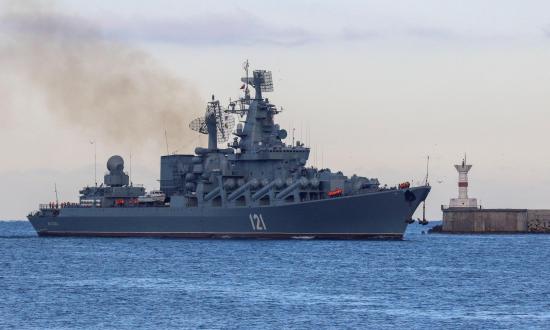Until the Russo-Ukrainian War, the Russian Navy seemed to be on the verge of a new chapter, emerging from a period of deprivation after the collapse of the Soviet Union and benefitting from the strong political support of President Vladimir Putin. Reforms and modernization initiated after the 2008 Russo-Georgian War have had time to take effect, shipyards are producing new surface combatants and submarines, and Russian naval strike capabilities have been enhanced in recent years by long-range Kalibr and Zircon cruise missiles.
Renewed investment in the navy is not surprising. Russia’s 2015 maritime doctrine singles out the expansion of NATO’s “military infrastructure to Russia’s borders” as “unacceptable” and sketches the need to protect Russia from seaborne threats and block “foreign naval activities in designated areas and zones,” such as the Arctic, with high economic and security potential. Even before publication of the doctrine, Russia’s 2014 intervention in Syria seemed to indicate an expansion of naval expeditionary capacity and interest in foreign naval bases: developments that could support an increasingly active navy as Russia continues to produce new ships and weapon systems.
Despite the promising trends, the Russian Navy’s performance in the Russo-Ukrainian War indicates that its trajectory is not as clear as first seemed. The Ukrainian coastline presents clear opportunities for littoral operations, but the Russian Navy was unprepared for innovative tactics used by an adversary that lacks significant naval forces of its own. The Russo-Ukrainian War indicates that it will be difficult for the Russian surface fleet to succeed in a more challenging conflict despite recent modernization efforts, presenting a rare opportunity for U.S. and NATO navies to understand a possible future adversary.
Russian Military Strategy for War with the West
Besides nuclear deterrence, Western analysts expect the Russian Navy would try to accomplish two missions in a conventional conflict with NATO: protect Russia from naval air and cruise missile attacks and strike key targets in Europe to degrade NATO’s ability to sustain an offensive. In the first task, the navy would provide a defensive barrier by engaging enemy naval forces at a distance from Russian shores—in areas such as the Mediterranean and Barents Seas—to complicate NATO’s ability to project naval power.
Russia recognizes, however, that the bulk of Western conventional firepower is land-based, and the navy’s second task addresses that threat. A recent CNA report notes that “one of the principal challenges” for Russian strategy “stems from the belief that the opening phase of a war with NATO will feature a massed missile-aviation strike” involving all manner of piloted and unpiloted aircraft, theater ballistic missiles, and cruise missiles against key targets deep inside Russian territory. A RAND Corporation report supports the CNA assessment, noting that “the NATO aerospace attack is seen by Russia as the center of gravity,” which must be disrupted at the outset of conflict by striking—preemptively if necessary—C4ISR targets with improved long-range missiles to deny NATO the initial advantage.
Preemption fits within the Russian “active-defense strategy,” which General Valery Vasilyevich Gerasimov—chief of the general staff and the current commander of Russian forces in Ukraine—connected to “preemptive neutralization of threats to state security” as part of an overall defensive strategy against Western aggression in 2019. Western analysts also suspect that Russia will attack civilian infrastructure in addition to NATO’s offensive capacity in an effort to degrade civilian morale and prevent a protracted war, a method currently used against Ukraine and supported by naval Kalibr cruise missiles. As more Russian warships are commissioned and equipped with Kalibr and the more advanced Zircon, the navy is theoretically positioned to fulfill its role in active defense in a larger war.
Historical Challenges
Despite the Russian Navy’s theoretical strength, the Russo-Ukrainian War indicates that something is wrong, and the navy’s rocky history provides context. In the 1920s, the Red Army was already thinking in terms of the active-defense strategy, planning to use mobile forces to attack potential threats beyond the Soviet Union’s western border while the navy defended the coasts. Josef Stalin authorized an aggressive shipbuilding plan for large warships in the second half of the 1930s and the Soviet Navy began to strengthen its forces in the Baltic and Black Seas and on the Arctic and Pacific coasts. Procurement plans were undercut by the lack of sufficient shipyards and the imminent war with Germany, however, which redirected Soviet production toward the army. Soviet leaders looked favorably on new capital ship building programs as the war neared its end, but plans were again dashed—this time by Nikita Khrushchev’s focus on advancements in nuclear missiles and bias towards submarines over surface ships.
Political support for the Soviet Navy improved after the American naval blockade during the Cuban Missile Crisis demonstrated the utility of sea power. Soviet leaders were receptive to Fleet Admiral Sergey Georgyevich Gorshkov’s arguments for an expanded and wide-ranging battle fleet, which was approved and sustained despite the strain it placed on the Soviet economy, though the Soviet Army opposed Gorshkov’s design. Although U.S. naval officers grew increasingly apprehensive, the collapse of the Soviet Union revealed that the navy’s real combat power was far less than imagined, with many ships hopelessly outdated and unmaintained. In the decade following the collapse, Russia reduced the former Soviet Navy by 75 percent.
The Russian Navy’s history provides two observations. First, the navy has always been subordinated to continental security concerns. Second, long periods of neglect have often forced the navy to make up for lost time. Even when it seemed to have recovered at the height of the Gorshkov era, the navy’s real combat power was less than it seemed, and its role in Russian strategy remained limited.
Lessons from the Russo-Ukrainian War
The Russian Navy’s performance in the Russo-Ukrainian War provides three lessons that contribute to a more accurate estimate of Russian naval power. First, the historical cycle is repeating. The navy has climbed out of the post-Soviet period with the help of state investments in shipbuilding and weapon development, but the surface fleet’s utility and combat power remain surprisingly limited. Some observers have noted the navy’s relative success early in the war in gaining control of the Sea of Azov, supplying ground forces during the battle for Mariupol, and imposing a blockade of the Ukrainian coast. One year into the war, however, the outlook for the Black Sea Fleet is anything but bright. Between 24 March and 29 October 2022, a tank landing ship was destroyed and two others were damaged pier-side by a Ukrainian ballistic missile, a guided-missile cruiser—the Moskva, flagship of the Russian Black Sea Fleet at the time—was sunk by Ukrainian-produced antiship missiles, a landing craft was destroyed by an unmanned aircraft, a logistics ship was damaged while underway, and still more warships were damaged in a coordinated attack by unmanned air and surface craft at the key port of Sevastopol. By June 2022, Ukrainian forces had driven the Black Sea Fleet away from the coast, and Russian warships increasingly relied on Russian coastal defense and ground-based air-defense systems in occupied Ukrainian territories for protection. In September, Russia relocated submarines away from Sevastopol and was later forced to recall surface ships from Black Sea operations to protect them from unconventional Ukrainian attacks. The only tasks the navy has successfully sustained are cruise missile strikes and conventional deterrence operations in the Mediterranean Sea to challenge Western warships, but the strikes are conducted from a distance in relative safety, and the interactions in the Mediterranean are obviously not in a high-risk wartime setting between belligerents.
Second, the modernizing Russian Navy is not radically different from its Soviet ancestor. Russia’s current military strategy assigns specific roles for the navy that still serve a land-based, active-defense strategy. The only adjustment that the Russo-Ukrainian War makes is an observation that the navy is currently incapable of effective direct support on the army’s flank: a role that it was able to perform with some success during World War II. Russia might accept this limitation if it has concluded that the navy only needs to complicate NATO’s advantages in long-range precision fires during the preliminary stages of a conflict, but the war with Ukraine demonstrates that it comes with a cost.
Finally, the Russian Navy still faces significant challenges meeting its strategic requirements despite improvements in quantity and quality of cruise missiles and the commissioning of new ships. To defend Russia from seaborne attack, Mediterranean forces would have to be based in Syria or have passed through the Bosporus and Dardanelles Straits prior to the outbreak of war, and Baltic and Arctic operations will become more difficult if Sweden succeeds in joining NATO. Given the vulnerability of Russian warships in the Black Sea against a less advanced adversary, it is doubtful that they would fare much better in the Mediterranean and Baltic against NATO surveillance assets, warships, and land-based aircraft. To disrupt a NATO air and missile attack, Russian ships and submarines equipped with Kalibr cruise missiles could still reach Germany and Italy from the Black Sea and the United Kingdom and France from the Baltic, but Ukraine is only the most recent example of how much bombardment a state and society can absorb and still maintain command, control, and resolve.
Like Admiral Gorshkov’s navy of the Cold War era, the Russo-Ukrainian War indicates that Russian naval power is something less than it appears on paper. Western strategists should not take comfort in Russia’s naval challenges. Instead, observers should look for signs the Russian Navy is learning from the experience in the Black Sea and question NATO’s ability to operate under similar circumstances. In 1996, the Royal Navy’s Admiral of the Fleet Sir Julian Oswald, reflecting on how Western officers in the late Cold War found it difficult to believe that the Soviet Navy would assume a defensive posture to protect their ballistic-missile submarines instead of immediately assuming the offensive, wrote, “The first of our problems was to recognize that they were not all 10 feet tall and faced problems the same way as us, with maintenance, reliability, logistic support and crew training. . . . With these sorts of constraints and the missions placed upon it, we came to realize that the ‘huge Soviet Navy’ was in fact very limited in resources.” Understanding the modern Russian Navy requires similar perspective. Naval professionals can learn from Russia’s tribulations to strengthen their own preparedness while also using careful analysis to place the Russian Navy in context.






